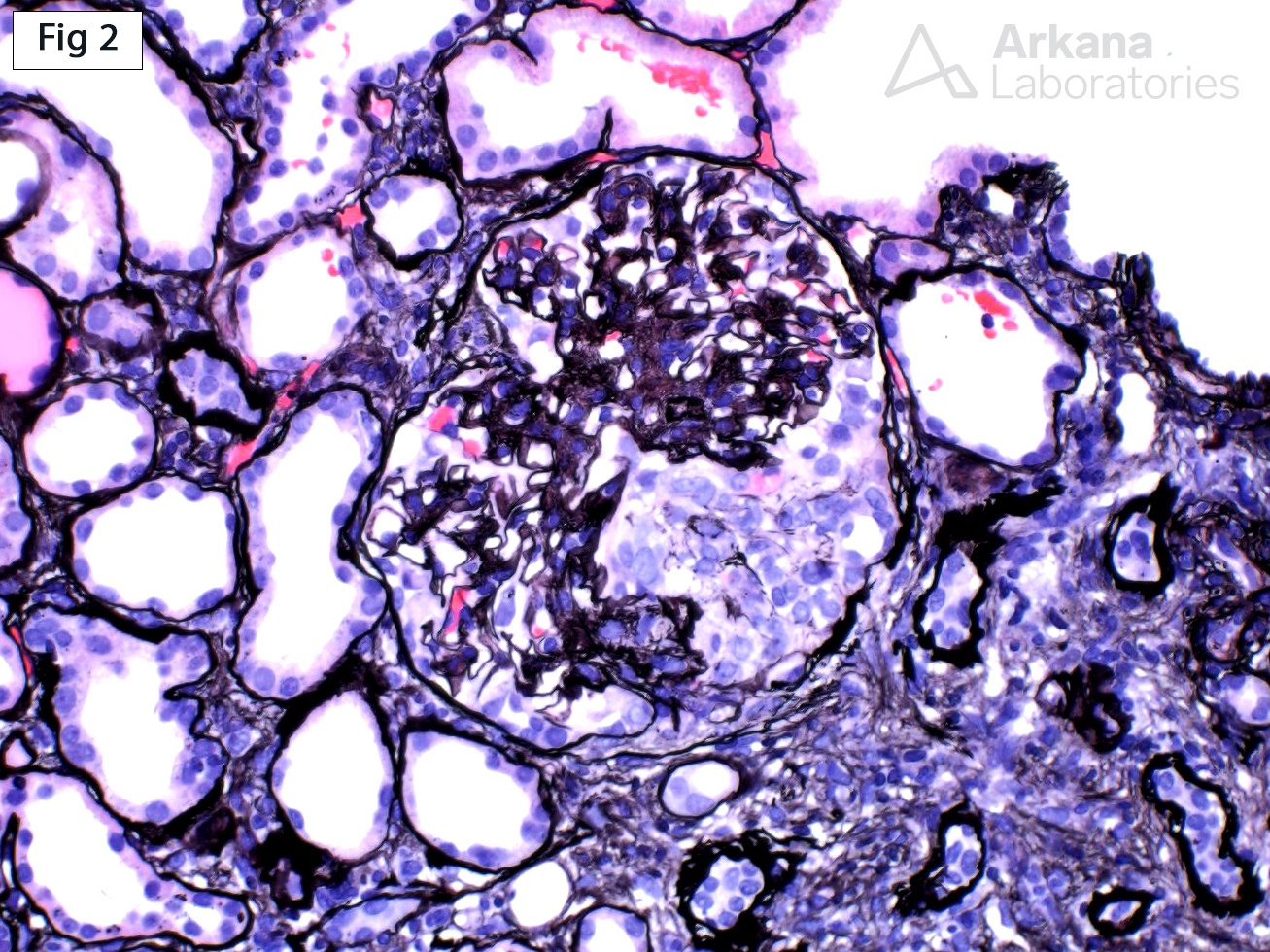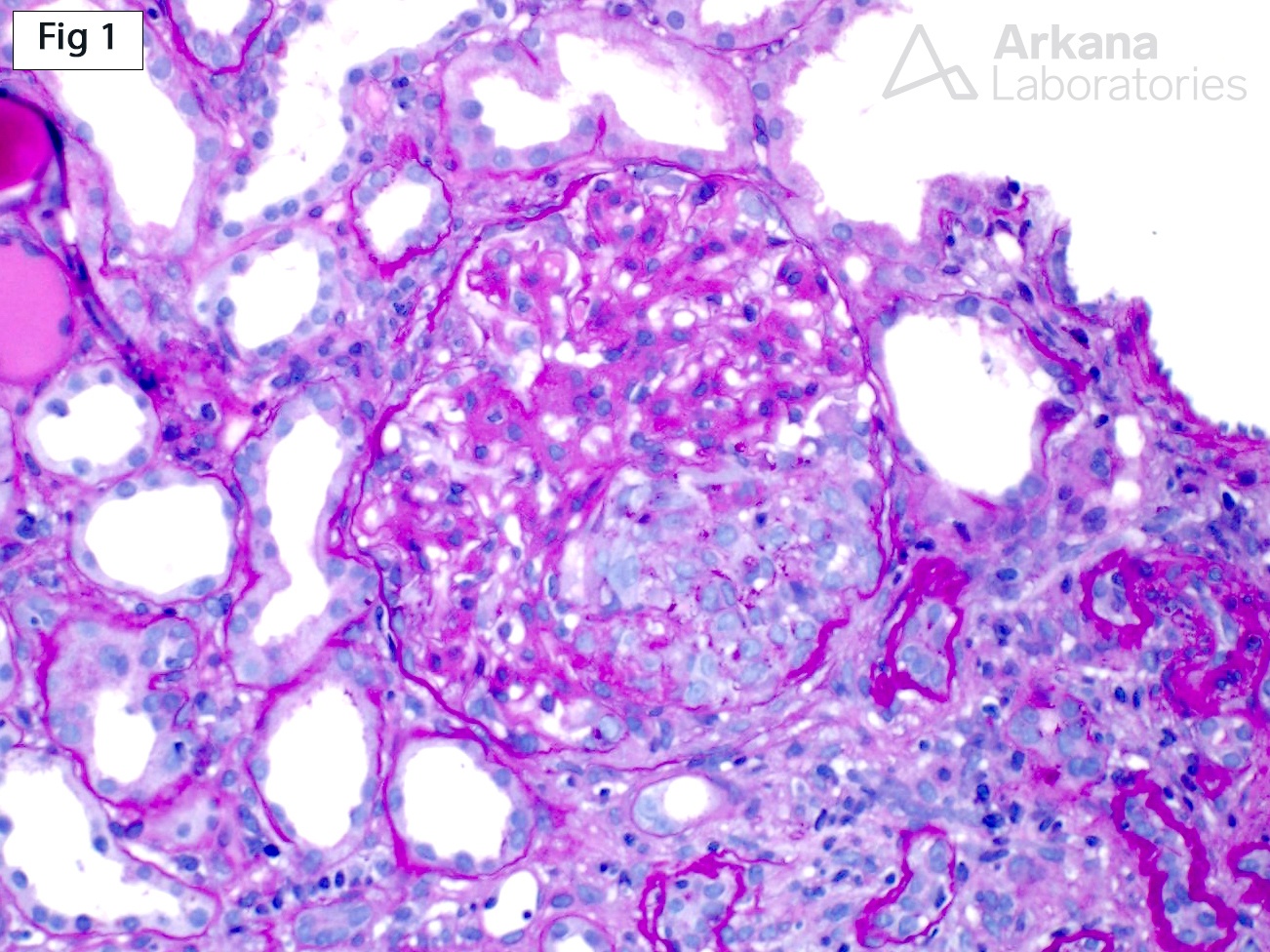Fibrillary glomerulopathy is a rare disorder of unknown etiology and pathophysiology, which is characterized by deposition of course, randomly-oriented, non-branching fibrils within the mesangium and/or capillary loops. These deposits typically show positive “smudgy” glomerular staining for IgG, C3, kappa and lambda by immunofluorescence. The pattern of glomerular injury by light microscopy is variable; however, mesangial matrix expansion by a PAS-pale, weakly argyrophilic material is almost always present. Cellular crescents (Fig 1 and 2), although uncommon, have been described in up to 17% of cases (see reference). Given the rarity of this pattern of glomerular injury, its clinical significance is still to be determined. Excluding other causes of crescentic glomerulonephritis is required prior to establishing the diagnosis of crescentic fibrillary glomerulopathy.

Reference:
Nasr SH; Valeri AM; Cornell LD, et al. Fibrillary Glomerulonephritis: A Report of 66 Cases from a Single Institution. Clin J Am Nephrol. 2011; 6: 775-784
Quick note: This post is to be used for informational purposes only and does not constitute medical or health advice. Each person should consult their own doctor with respect to matters referenced. Arkana Laboratories assumes no liability for actions taken in reliance upon the information contained herein.


